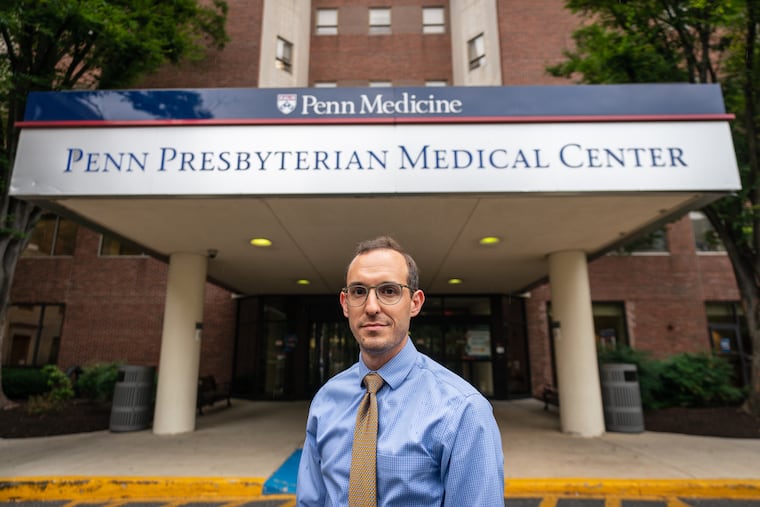In the ICU, a pharmacist is part of the team at the patient’s bedside
At Penn Presbyterian, Raymond Lamore is a pharmacist embedded as part of the team.

My Philly Hospital Job is a short series that brings Inquirer readers inside hospitals to learn more about the day-to-day of health-care workers.
Raymond Lamore, 36
Job
Pharmacist at Penn Presbyterian Medical Center.
What to know about the job
People commonly encounter pharmacists behind a pharmacy counter, but the profession also operates in hospitals, insurance companies, and the pharmaceutical industry. The career path starts with a doctorate in pharmacy, or Pharm. D., followed by options for advanced studies.
About 40% of pharmacists nationwide work in retail pharmacies such as CVS, Walgreens, and independent shops, according to the U.S. Bureau of Labor Statistics. Another 25% work in hospitals. The Philadelphia metro area has 7,050 pharmacists, the fourth-highest in the nation. The average annual pay for pharmacists in the region is $129,230.
On the job
Ray Lamore sticks out wearing a button-down shirt and tie among the physicians and nurses in scrubs on the cardiac critical care unit. He pushes a mobile work station with his laptop, walking alongside five other health-care workers on the well-lit and quiet hallway. They stop next to the door of a patient’s room for morning “rounds,” getting updates on how the patient fared overnight and discussing their care plan for the day.
“Are they still shivering?” Lamore asked the physician assistant who presented the situation with a patient who suffered cardiac arrest.
Shivering can result from everything from a fever to seizures or brain damage, and different causes would lead Lamore to recommend different medications. The medical team decides to order a cognitive exam. Lamore suggests continuing the patient’s current medication until they know more.
The patients on this unit at Penn Presbyterian Medical Center are among the hospital’s sickest. On this August morning, six out of 20 are connected to an ECMO, a machine that supplies the blood with oxygen when a person cannot do so with their own heart and lungs. All have multiple bags of medications connected to their IV lines.
Lamore helps the physicians balance their patients’ medications. He considers the benefits of the drugs, accurate dosing, and whether there could be harmful side effects. Instead of sitting in a pharmacy in the hospital basement, he joins the providers on the floor, making decisions as part of the team.
» READ MORE: Calming rambunctious kids, soothing fears: The challenges of working as children’s x-ray tech
While the team talks, he types pharmacy orders on his laptop. After most decisions related to medications of the second patient that morning are completed, Lamore walks up the hall toward the nursing station. There he picks up a medication that arrived through the hospital’s air tube delivery system, and drops it off with a nurse.
He circles the station, stopping at a computer in a corner where a pharmacy student is reviewing a chart.
Lamore asks how she would approach a patient in a lot of pain with history of opioid addiction.
“What would you do if a patient felt strongly about not using opioids?” he asks.
In a five-minute conversation, they weigh the trade-offs: It’s understandable for a person in recovery to be nervous about painkillers, but without pain management people are at risk of suffering to a point that they seek illicit drugs to get relief.
The rounding team has moved on to discuss a third patient, so Lamore leaves the student and returns to his mobile work station and colleagues.
He joins a conversation about next steps before the patient leaves intensive care. Lamore prepares to type the pharmacy discharge orders into the patient’s file. One of the physicians has beat him to that task — the orders are already in the system.
“You see, I can learn,” the physicians joked.
Lamore says with a laugh, “I’m proud of you.”